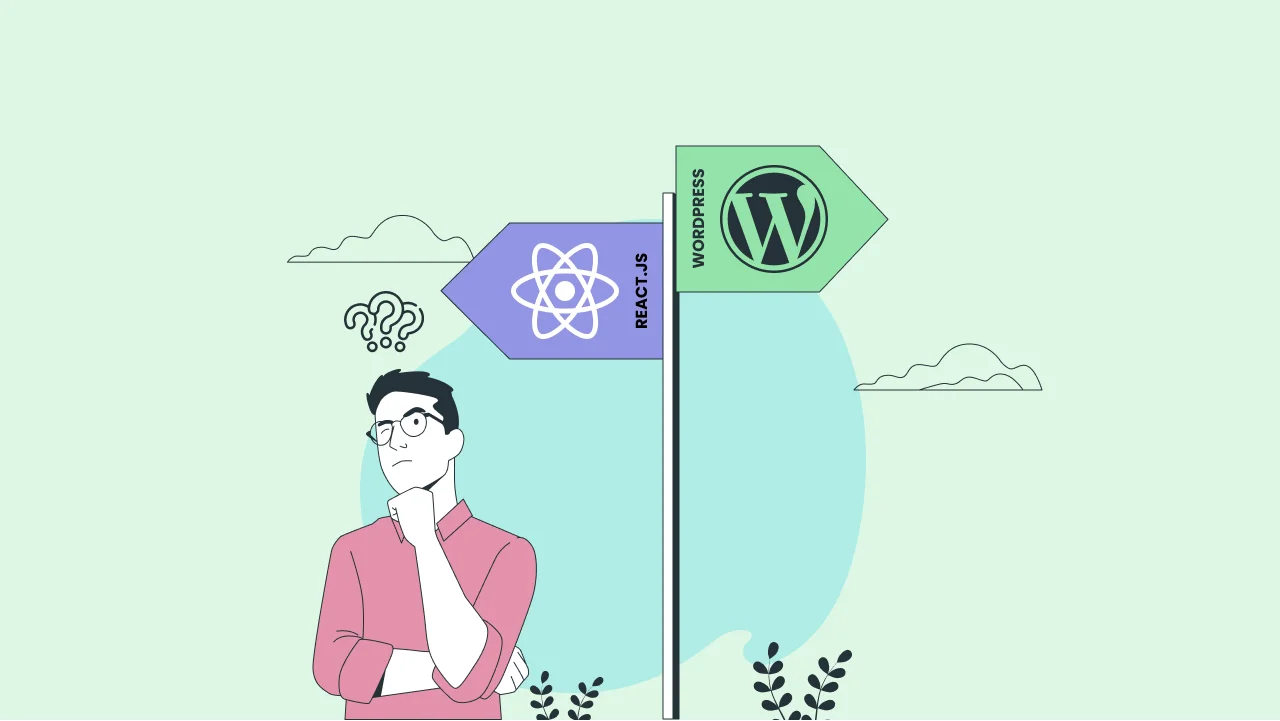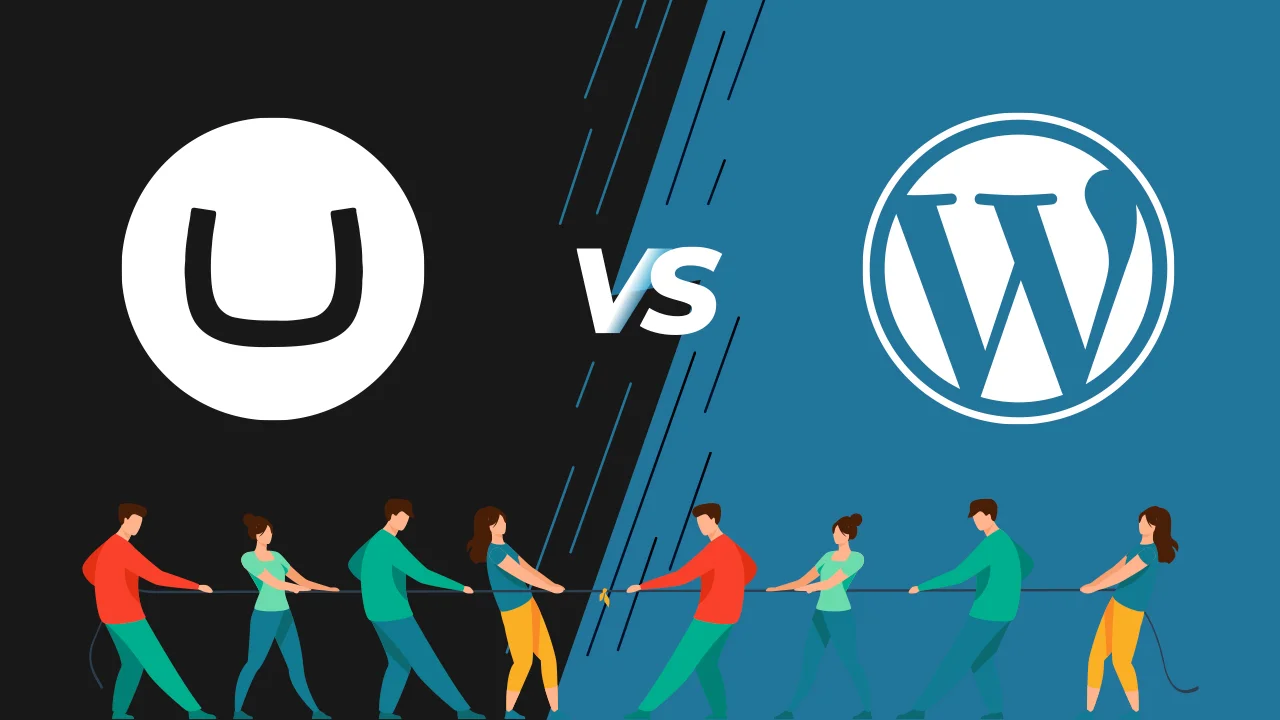What is WordPress?
WordPress is a content management system that enables users to create a web page.
It started as a blogging platform in 2003, but throughout the years, other content types have become supported.
Additionally, other traditional mailing lists and forums, media galleries, and stores have made it an ideal web creation platform. WordPress is an open-source platform, which gives developers access to the original source code and the modification and redistribution right.
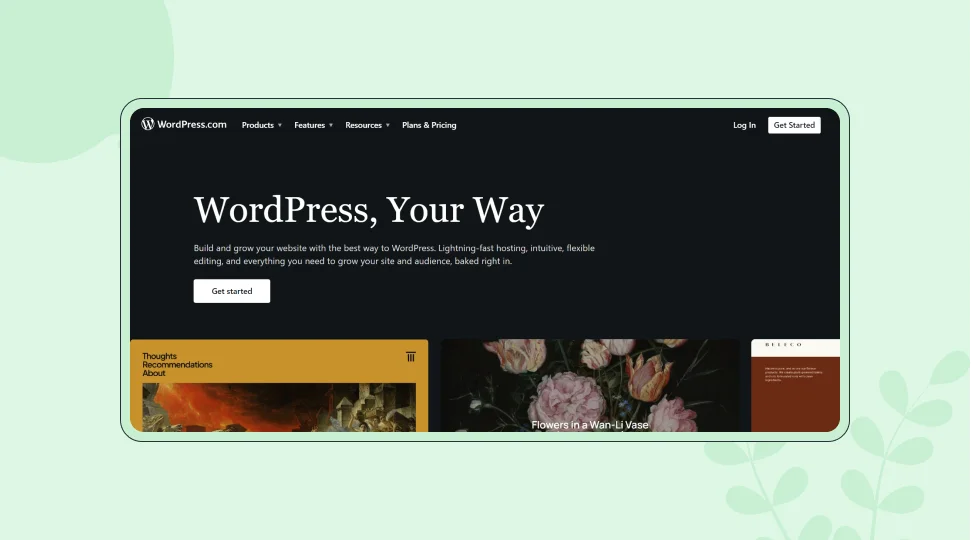
For this reason, a large developer community has worked on wordpress themes and plugins that represent how a website appears and works, respectively. Another reason WordPress is a popular creation tool is dependability, as it has resiliency and robustness.
Moreover, it has an easy-to-use interface that is easy to follow with little or no background experience in coding, allowing users to manipulate it meaningfully.
What is React.js?
React.js, better known as React, is a JavaScript library commonly used to create user interfaces including web applications.
React was created by Facebook developers and first published in 2013 under an open-source license.
Web applications were considered bulky and the process was cumbersome to alter the data because it required reloading the page. The main objective of the library was to create rapid and easily scalable software.
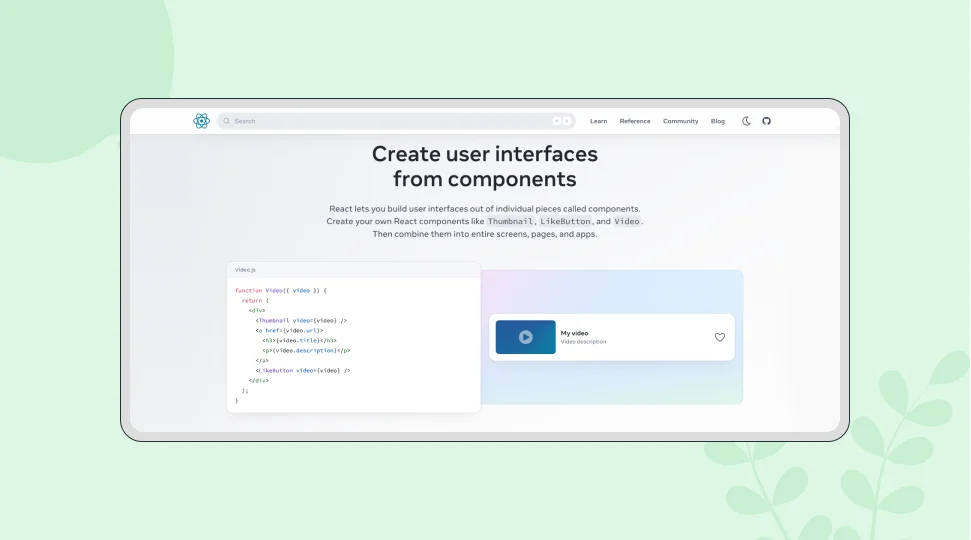
React operates based on libraries which implies the concept of components. Components are small parts of code that conserve the specified state. React allows the creation of a predictable and simple code structure as every component is individually responsible for the rendering and state management.
React has gained immense popularity in the programming world, as it is superior in rapid operation and flexibility. At the same time, it revolves around the creation of small components that need to be re-rendered in case of a change to save time and resources.
Hence, it is a modular-based powerful tool for programmers of modern web development trends.
What are the key features of WordPress and React.js?
WordPress:
-
User-friendly interface:
WordPress has secured a name for providing the most comfortable and user-friendly experience for users ranking from amateur to professional.
The dashboard is easy to navigate and the menus are clearly labeled. The best part? You can find a number of tutorials and resources available online that can help you get started with WordPress.
-
Customization options:
-
SEO-friendly:
-
Mobile-responsive:
-
E-commerce capabilities:
-
Content creation and management:
-
Multilingual support:
-
Community support:
-
Analytics and tracking tools:
-
Easy migration and backup mechanisms:
-
Component-based architecture:
-
Virtual DOM:
-
JSX syntax:
-
Unidirectional data flow:
-
React Native:
-
High Performance:
-
Reusable Components:
-
Large Community:
-
Server-Side Rendering:
- Ease of use: WordPress wins by a long shot in this department. It’s beginner-friendly and meant to get beautiful websites even for people who have never built a website. React, on the other hand, requires a good grasp of programming concepts since it’s a JavaScript library.
- Customization: When it comes to customization, both platforms offer options, but they
work differently. WordPress relies on themes and plugins for design and functionality, while React lets you tweak every aspect using scripts, though you’ll likely have to write those scripts yourself. - Best fit: WordPress shines for content-focused sites like blogs and business pages, while React is the go-to for interactive web applications. If your project demands instant changes on the screen, highly active forms, and an impeccable user experience, React is the unbeatable choice.
- Time to launch: WordPress, the average to the moderately complex website, is quicker tolaunch because the designs are premade and tested. React projects have a longer launch time becauseevery element is built from scratch, but this guarantees better performance and ease-of-scale in thelong run.
- Community and Support: WordPress has a massive community of new developers that are wholly based on providing free or low-price plugins and themes. It’s easy to find a step-by-step guides on any changes you want to make. React is more suitable for experienced user, whereas WordPress is bit beginner friendly.
The platform is readily customizable with WordPress themes and plugins, meaning users can choose from thousands of themes that will change how their site looks and plugins that allow the addition of various functionalities – from simple contact forms to semi-complex e-commerce stores.
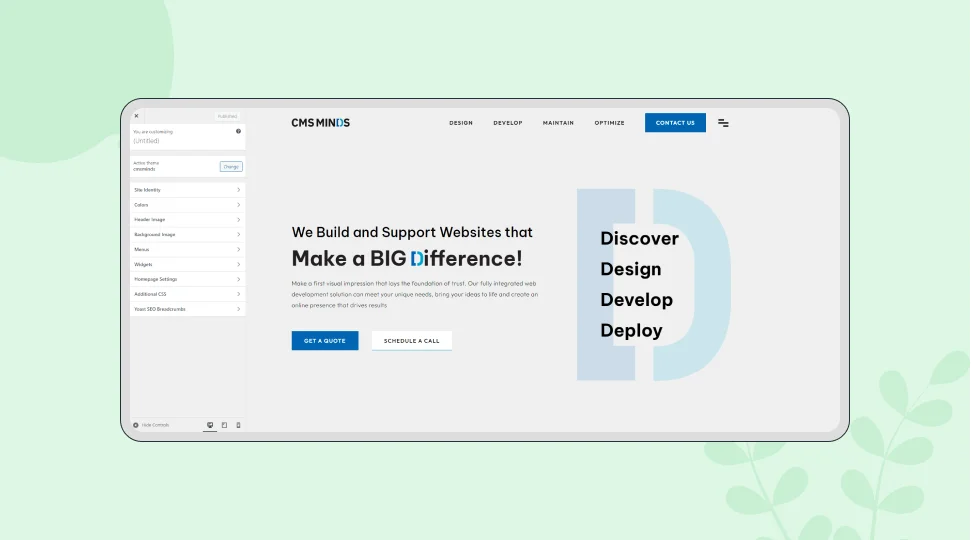
WordPress is also SEO optimized out of the box, but numerous utility SEO plugins give more options to optimize content, how websites are displayed in search engines, and the indexing optimization, thus increasing visibility to attract potential visitors.
Since most WordPress themes are designed to be mobile-responsive – this makes the website accessible and viewable on any device which is highly sought after by search engines, contributing to a better rank, as well as promoting longer user engagement.
WordPress also integrates the WooCommerce plugin to develop in-site stores, where the user can easily sell goods and services.
Drafting content, editing, and publishing content has never been easier with several features that include proper organization of a content catalog with categories and tags, as well as the creation and integration of media files.
WordPress supports a multilingual plugin that helps reach a broader potential target audience for businesses and companies.
An extensive and active community provide extensive resources that include detailed guides for troubleshooting, forums for questions, and third-party tutorials to develop better content.
WordPress can be interconnected with the major analytics platforms such as Google Analytics to track platform access and user behavior. Based on these data, the company can make informed strategic decisions and improvements to attract more users or enhance their user experience.
WordPress has built-in mechanisms to easily migrate from one hosting to another and schedule regular backups to ensure data integrity.
React.js:
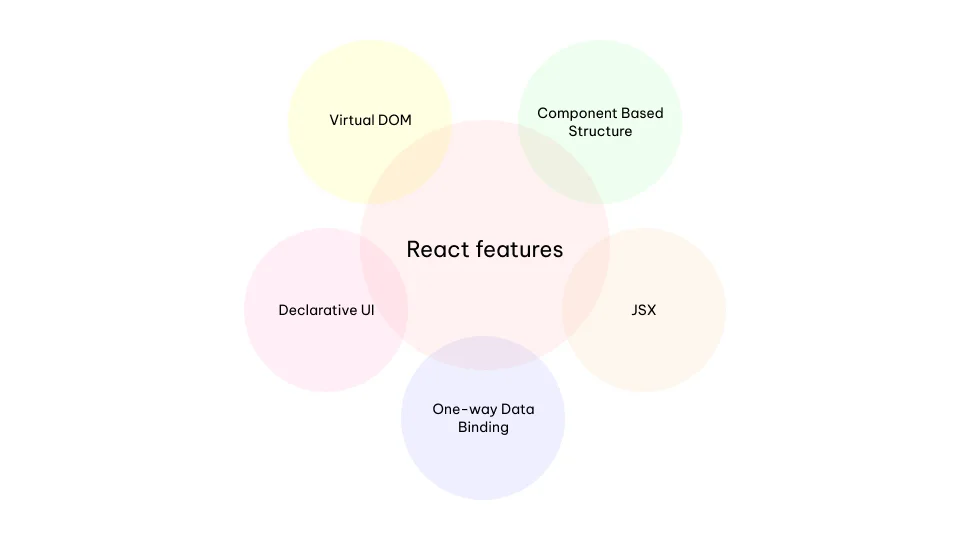
The development of a web application in React is made up of several reusable components. It helps with organizing the code in a better and more modular fashion, reducing errors and facilitates easy maintenance.
React uses a virtual document object model (DOM) that causes changes in the browser to provide more effective transformations. This process leads to only updating the parts changed per user’s input, which makes the changes in the browser smoother.
JSX is a handy extension introduced by React. It lets developers blend HTML-like code with JavaScript, simplifying the creation and handling of the user interface (UI) in applications. It’s like speaking the language of UI design directly within your JavaScript code.
Unidirectional data flow is another key concept in React. It’s like traffic on a one-way street, ensuring data moves in a single direction—from the main component down to its child components. This setup streamlines data management and makes debugging easier compared to the back-and-forth flow of traditional two-way data binding.
It works similarly to React but allows for the development of mobile applications for iOS and Android.
It uses the device’s features and combines them with the modified web development to create an app. The tools are adapted for this format to allow inspecting and changing components and reduce time to market.
React’s unique method of updating the DOM and its function to render components on their own are some reasons it is considered high-performance, particularly for highly intensive, demanding user interfaces.
The Component-based architecture of React makes it easy to create reusable code for developers. Components built in an application can be re-tasked in other parts of the same application or in other projects. This guarantees consistency and reduces development time.
The React community has expanded dramatically in recent years and is still growing. The community offers countless resources, shared libraries, and forums where developers can engage with the latest technology and patterns.
React SSR enables pages to be loaded faster on the first view or initial load – which improves the pages’ SEO and performance, mainly for pages with heavy or complex content.
WordPress vs React: Picking the right tool for your website
Building a website is like building a house. And when it comes to WordPress, it’s like buying a prefabricated home. You get the essential structure, rooms, maybe even some basic decor.
Choose a layout that appeals to you, move your stuff in and get comfy! React, in this analogy, is more like a toolbox filled with pro-grade construction tools. You can pretty much build your dream house from the foundation up. But you’re also going to have to build it, and it will take skill and effort.
Here’s where they really differ:
How to integrate React With WordPress
Think of React and WordPress as your reliable toolbox and a set of powerful tools. WordPress is your go-tofor managing website content like articles and images, while React offers tools for creating sleek, interactive interfaces.
When you combine React with WordPress, you blend the best of both worlds. You get a website that’s easy to manage, yet packed with dynamic features that respond to your visitors’ needs.
Some popular ways to make this magic happen include:
- The Headless WordPress Approach: Transform WordPress into a behind-the-scenes data
powerhouse with its REST API, which acts as a data translator. React can then use this data to
independently build the site’s look and feel. This method is ideal when you want total control over
the frontend. - Teamwork with WordPress Themes: Create a WordPress theme that relies on React to power
its frontend. WordPress manages the data, while React enhances the appearance and adds interactive elements. - React Plugins: The Power Boost: If you need to add specialized features like a sophisticated contact form or an interactive quiz to your WordPress site, React plugins let you integrate these directly.
- Gutenberg Blocks: The Modular Approach:WordPress’s built-in editor, Gutenberg, allows for the addition of content blocks. You can craft custom React blocks to extend your editing capabilities with unique layouts and features.
Things to remember: Familiarity with both WordPress and React is required to successfully
integrate the two. Tools like Create React App can assist with setting up the React side. It’s important to note that WordPress primarily uses PHP and React is based on JavaScript, so ensuring smooth communication between the two can be a part of the challenge.
WordPress vs React: Final Verdict
Comparing WordPress and React isn’t about declaring one as inherently better than the other. Each platform has its strengths, and neither reigns supreme in every scenario.
Instead, the question should focus on which platform aligns better with the specific needs of your website.
For most websites, WordPress is the no-brainer choice. However, if you’re a developer or have the resources to hire one, React offers more flexibility in terms of designing diverse content and managing users.
Choose WordPress if you’re looking to get your website up and running fast, enjoy the abundance of themes and plugins available, and prefer to avoid coding.
Opt for React if you desire full control over your project, need to develop a web application from the ground up, and have a strong command of JavaScript.
Ultimately, the choice between WordPress and React depends on your specific website requirements and long-term goals.

